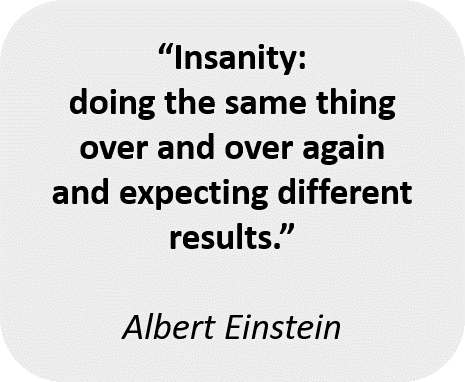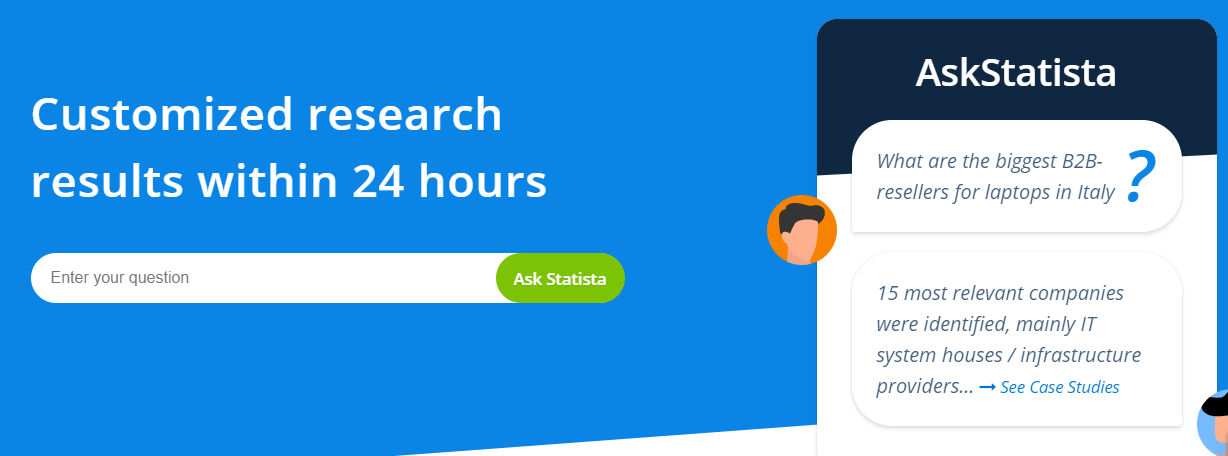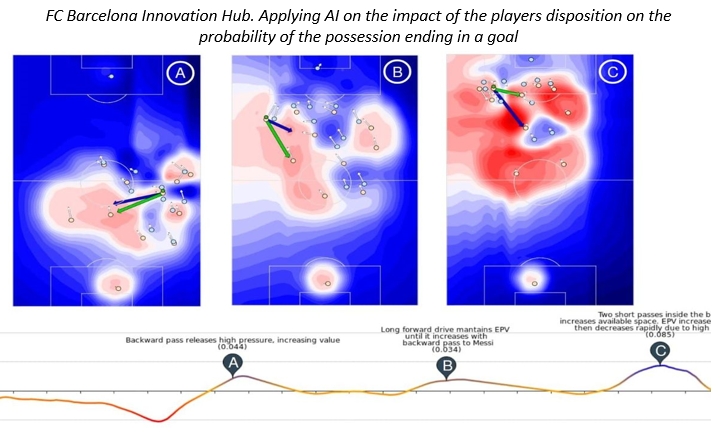Why being surrounded with so many technological advancements we still end up using traditional methods of market research? What gets in the way of innovation and how to overcome this?
“It’s the 21st century: AI, robots, system1 tools at our fingertips…. and we still get into focus groups and ask 6 respondents to describe how they shop!”
Imagine a market research industry as one company. Almost 100 years of history, $80bln in revenue, sales stagnating for the past several years [1]. Innovation remains among the main concerns in the industry [2]. The company recognizes the emerging technological trends, but fails to turn them into business growth. Sounds familiar?

 The culture of experimentation is vital for consumer insights function. It helps to discover new methodologies, opportunities for growth, create faster and better ways of activating insights in the business. But the adoption is happening at a frustrating pace [2]. There are thousands of solutions out there. And we tend to stick to the same 5-10 safe options, often defined only by the previous experience and colleague’s recommendations.
The culture of experimentation is vital for consumer insights function. It helps to discover new methodologies, opportunities for growth, create faster and better ways of activating insights in the business. But the adoption is happening at a frustrating pace [2]. There are thousands of solutions out there. And we tend to stick to the same 5-10 safe options, often defined only by the previous experience and colleague’s recommendations.
“I feel like the person who was in my place 10 years ago, did the same research as I do now. And this is scary.”
If we don’t adopt innovation, it will come from the slap in the face. Undoubtedly the trend sounds intimidating to suppliers: they might soon meet a new type of competition from large tech companies. Just as an example, Apple Pay has almost half a billion shoppers in their “panel” [3]. They can make any other household panel supplier obsolete if they decide to monetize the data. But it’s a threat for the buyers as well. If their business doesn’t innovate, the disruption will come from the companies that have more access to consumer data and activate it faster and cheaper. Nobody wants to become a local taxi company that competes with Uber.
Eliminating the barriers to search and adoption of new methods is key for healthy competition and industry progress. So what stands in the way of clients and suppliers? And how can this be fixed?
BARRIER #1: “Don’t fix what’s not broken”
Clients see many advantages of working with the same suppliers, and rightfully so. Trust, predictability, global coverage and many more benefits are obvious: “Their team is highly experienced in my industry, they can provide some expert advice for free when I need. Cannot imagine having that with a new ad-hoc supplier”. Switching to a new agency is associated with an effort, fear of failure and risk of spoiled business relationships.
POSSIBLE SOLUTIONS:
There are plenty of opportunities to help your current suppliers build capabilities further. Do you coach them? Do you give feedback? Do you discuss the latest industry news with them? Use them as your day-to-day consultants in new approaches: “Agency is not a static concept. Behind each name, there are teams and people who want to grow and innovate.”
Exploration should not get in the way of the core work. Insight leaders should appoint team members responsible for spotting new suppliers with no fear of disrupting established processes: “I remember we had such a person in the insights team. This was one of the best things that happened to our department.”
BARRIER #2: “Management doesn’t like things they don’t understand”
Clients don’t feel the “pull” from top management to experiment: “It is difficult to suggest innovative agencies when your leaders are fine with the current state of things and remember the failures of the past”. And neither their customers want change: “Our retail partner wants to see the recommendations that are backed up by a well-known agency name.”
POSSIBLE SOLUTIONS
Help management see the value of new approaches. Show what’s in it for the company: improved speed? Lower costs? Higher quality? “Don’t talk about new methodologies, focus on the business challenges they solve”. Being able to explain the most sophisticated approach in simple terms is a skill that insights managers absolutely need to have.
BARRIER #3: “The system forces us to stay conservative”
Yes, getting a new vendor into the system can turn into a nightmare. “All the administrative work is on me: NDA, legal, new vendor creation process can take a month”. The KPIs of procurement can sometimes get in the way of innovation: less suppliers in the roaster, less complexity, lower costs.
POSSIBLE SOLUTIONS
Seek for innovation in the areas where barriers are lower. “Look for hybrid solutions. I use the same global supplier for respondent recruitment; and then I ask them to work with a freelance moderator of my choice. It’s a win-win and no need for new vendor registration”.
Enable flexibilities in procurement policy in some cases. Is it possible to raise the minimum threshold and allow pilots? Can you run one-time contracts for small projects without having to go through all the procedures.
BARRIER #4: “I don’t feel the community”
When it comes to supplier search, word of mouth is the name of the game. But the insights function that is supposed to be the most connected is often working in silos. Confidentiality, competitiveness, but, more importantly, lack of culture of sharing stand in the way. The situation is especially tough in smaller companies. “When I changed jobs I realized there is no CMI community out there…no one to ask except for ex-colleagues.”
POSSIBLE SOLUTIONS
Word of mouth is key and it’s OK. But we need to step back from old-fashioned “call a friend”. “People just don’t understand how powerful Linkedin is: it goes way beyond job search. We all need to learn the mastery of building external networks, being able to ask questions and bring value in exchange.”
Leverage internal community. Create a shared document in your team where everybody should post recommendations based on their experiences with suppliers. The crucial point is the culture: everybody should feel responsible to “pay it forward”. This can only happen with team leaders promoting these behaviors.
BARRIER #5: “Science doesn’t get into the equation”
Breakthrough requires hard skills. Knowledge in data science and advanced analytics are still perceived as something extra rather than a basic job requirement. This often prevents from having an equal dialogue with data experts. “Look at any decent sports club – a data scientist is the right hand of the coach. We are probably the last generation that is not fluent in these areas and still succeeds in market research.”
 POSSIBLE SOLUTIONS
POSSIBLE SOLUTIONS
Technical skills should be encouraged as a KPI for promotions. This doesn’t mean each insights manager should be an expert in neural networks; but they should have enough understanding to efficiently cooperate with the technical team. “I won’t use Python at work; but at least I will find a common language with IT people to create better solutions for the business.”
BARRIER #6: “The more you search, the more you find the later you stay in the office.”
Most of our business questions need to be answered yesterday. There is no time for proper exploration. “We have higher chances of being punished for not meeting the deadline, rather than for not finding a new method.”
POSSIBLE SOLUTIONS:
Indeed we don’t have a “one-click app” for a supplier search yet. But lack of available tools cannot be an excuse today. Everyone has access to free reports, newsletters and supplier directories and there are tools to “delegate and accelerate” supplier search like “Ask Statista” and similar.
 These and many other examples came up as I was running the interviews. I feel optimistic: we already do a lot to help the industry move forward. Looking ahead, there are several important things we need to understand:
These and many other examples came up as I was running the interviews. I feel optimistic: we already do a lot to help the industry move forward. Looking ahead, there are several important things we need to understand:
- There is no “CEO of market research” that would drive the change. Helping the industry be innovative is a double-sided effort: buyers are not competing with suppliers here. We need to leverage the power of the community and help each other recognize the opportunities.
- I have no doubts about the technological side. In a few years, there will be an online platform that lets buyers find the right agency in just a few clicks and leave reviews for the companies they worked with. There are successful examples from other industries such as Capterra.com. And it will come sooner or later to market research, too.
- But change also requires personal leadership and passion. It is not about posting a picture with VR glasses on LinkedIn. It’s about having the curiosity to apply new things at work and courage to keep fighting for what you think is the right direction for your industry. And functional leaders should be the vectors for the young talents. They should be the first ones to promote the culture of exploration and desire to change.
I truly hope this was helpful to you. It would be great to know your personal experience on how you overcome the barriers to drive innovation in your industry! I will be more than happy to receive your comments or questions.
Special thank you to all who contributed to the article:
- Andrey Shmelev, Team Lead at High-Tech Start-up
- Eymeric Monange, Senior Director Digital and Retail Business Development at Coty
- Natalia Platonova, Senior Strategic Insights Manager DACH at Bel Group
- Nadia Morozova, Consumer & Audience Insights Partner at TikTok
- Ole Wassermann, Managing Owner at Wassermann Consulting
- Romolo Ganzerli, Global Digital Marketing Director at Coty, Co-Founder at MammaPack
- Svetlana Zaruba, Analytics & Insights Manager at Procter & Gamble
- Victoria Chappuis, Consumer & Market Insights Director at Coty
And of course to Anzhelika Logachevskaya, Legal Counsel and my wife.
Sources:
[1] ESOMAR Market research report 2019
[2] Greenbook Business and innovation GRIT 2019
[3] Loup Ventures; September 2016 to September 2019; year-end estimates
[4] BCG reports (“Why companies can’t turn customer insight into growth”, “the consumer voice – can your company hear it?”)
Images credits
- fcbarcelona.com
- Ask.statista.com
- Photo by Ajeet Mestry on Unsplash
- Photo by Chris Lawton on Unsplash










 by
by  POSSIBLE SOLUTIONS
POSSIBLE SOLUTIONS

